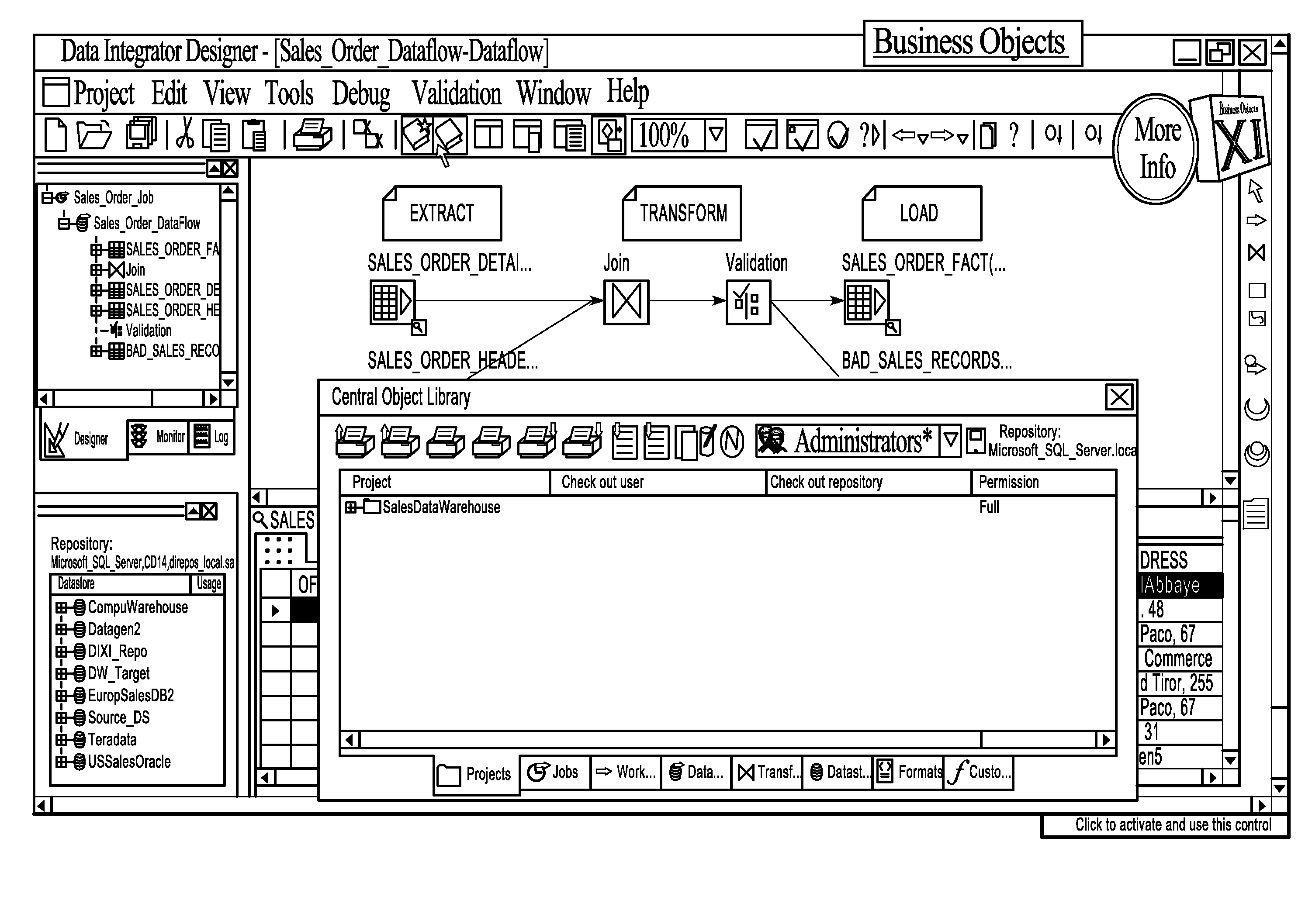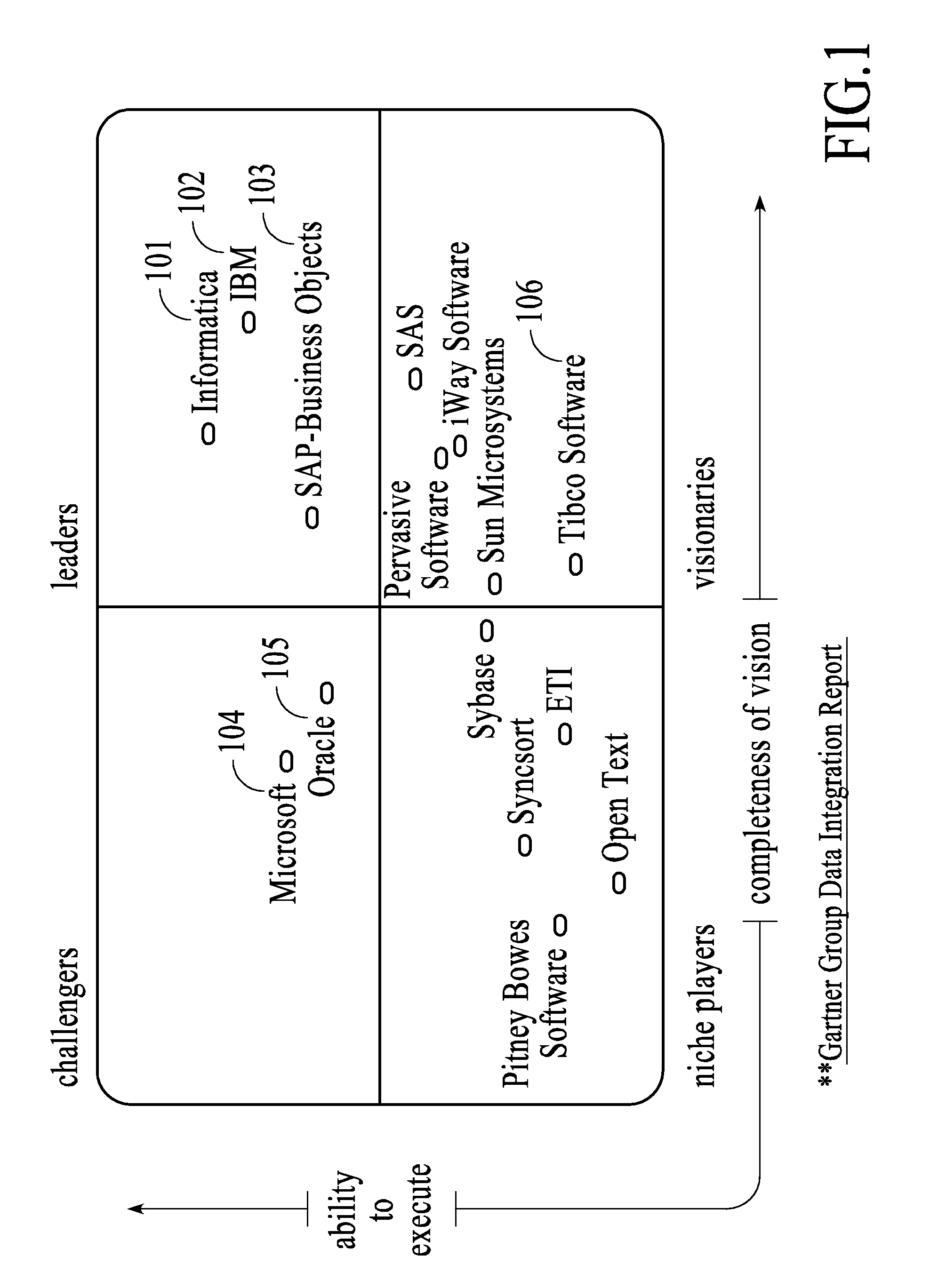For example, Software vendors no longer provide the high level architectures to the market place for multiple application vendors to map to.
Data technology is getting more complex and more chaotic.
Another example issue is Fragmented Customer Data Environments.
Second, the investment in data is large and growing.
A further issue is Vendor generated data silos.
The vendor generated data silos eliminate a company's ability to make choices because the investment in software, implementation, maintenance, ongoing consult services makes changing financially and technically unfeasible without a great deal of cost and transition pain.
Data silos have been a part of data management issues for decades.
Another issue relates to the fact that the vendor data integration strategy is to acquire enough software disciplines to offer a one stop shopping solution when a company needs data integration and data management software based solutions.
To date, the analysts have not confirmed any software vendor achieving the technical where with all to do this.
It is an expensive, unproven, high technical risk option.
A further issue relates to License Revenue Model: How much function is enough?
It is model that today, has now become a technical problem versus a key revenue strategy for vendors and their customers.
Functionality growth has reach the stage where it is a problem for companies in terms of implementation costs and technical risks, diminished to no value of new the function, complexity / risks of change, and limited technical skills sets to support the process.
A still further issue relates to Affordability versus Software Complexity.
Small to medium business, enterprises and business groups within companies cannot afford nor technically support the data integration software trends.
Whether the single vendor option is viable is a matter of debate.
Yet another issue is Financial Operational Criteria / Group Funding.
A still further issue relates to User group strategies.
The vendor single solution approach does not fit the business, financial, or technical model used by departmental data solutions.
The challenge is how to effectively provide a design of software to meet their data integration requirements.
A yet further issue is Sub-vendor technology.
Many times the sub-vendor software and / or its architecture are not fully compatible or have taken off into a very different path to the vendor's own development requirements.
The limited technical skill resources to implement and support complex software and data integration projects.
The technology design challenges are also contributing to data integration issues.
New, innovative design and GUI solutions are slow in coming because the underlying technology and design have not progressed.
There are significant core technology design issues that are impacting data integration software's capacity to support company's leveraging their structured data sources.
Script programming designs require scarce, trained, and experienced infrastructure programmer skill sets for writing support code for vendors' data integration software to function in a production or development environment.
It is an intensive process.
These screens are very icon intensive, use file folders schema extensively, pop up screens and program workflows within the GUI screen design.
It requires IT skilled users to utilize this level of complex software design.
The design inherently restricts how non IT users can access data.
Design issues also include the fact that the Internet came 10 years after the core design and architecture was developed for data integration software tools; and has not progressed away from its first generation design point.
Though 4th GL was designed as productivity software it has become part of the issues due to incompatibility of vendor versions of the code, new functions one vendor has and another does not leads to vendor's software and structured data formats being incompatible.
Great for the vendor revenue but an issue for a company needing an open, flexible data platform in order to maximize the business opportunities and ROI
Customers do not want to deal with vendor software incompatibility design issues due to the master vision of vendor's market strategy.
The control criteria also includes the security access processes but they are only a small part of the design complexity of the current data integration software standards.
Thus, providing additional user access in the control data design, is viewed as placing the data at high risk for a number of valid business, security and IT management reasons.
The net result however, is for the past 25 years departmental or group computing solutions have become a standard way of design support for users that is not fully managed by IT or the vendors.
The most serious software design issue with central control is that it involves the demand for data exceeds the limited IT resources.
IT does not possess the skills, even when working with group representatives to support a dynamic 21st century global business environment.
This is why the statement that data has overwhelmed technology reflects a very significant data problem.
It is because the software design and the processes are not structured to support the data environment into the future.
The technical review and assessment evaluation is the data integration software designs and architectures had become functionally overloaded, too complex for users.
In summary, data integration's complexity and chaos issues trends are getting larger and more difficult.
The business performance criteria, data ROI, the data software complexity—chaos issue, and the emerging technology trends results in the conclusion that more function, more complex single vendor solutions, and more consulting services are no longer the future for an effective, flexible data integration solution strategy.
 Login to View More
Login to View More  Login to View More
Login to View More 


